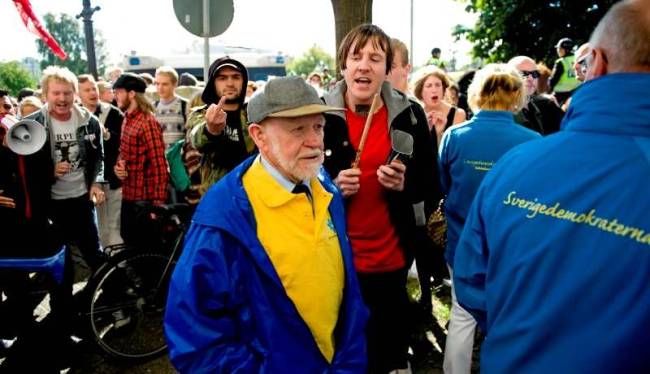Advertisement
Sweden’s voting public is getting older as the Sweden Democrats
emerged as the third largest party with elections getting closer.
Sunday, 03 November 2013
Swedish far right party, Sweden Democrat is now the third largest party
in the country according to the recent opinion poll also known as poll
of polls This comes a time when it also show that the Swedish voting
population is growing greyer by the day.
26 percent of voters today are age 65 or older, compared to 24 percent
in the last election. Unlike the perception that the older voters are
loyal to a political party or bloc, it had now emerged that the elderly
are not as loyal to their party or bloc as before, as more are likely
to switch voting allegiance when the time comes, according to Jonas
Hinnfors, a professor of political science at the University of
Gothenburg, who analysed the poll results on radio Sweden.
The far right party, Sweden Democrats has juggled up and is now the
third largest party in the country according to the polls conducted by
polling organisation Novus for radio Sweden, something that the party
has held for a while now. 
Swedish voter opinion or poll of polls is a compilation of the all the
leading opinion polls carried out by Novus for radio Sweden in October
and shows that the Sweden Democrats now have 9.4 percent of voter’s
support.
The Green Party shifted back by 0.8 percentage points to 8.9 percent
giving room to the Sweden Democrats. But it is too early to say if they
have established themselves as a stable party in-between the large
parties, according to Johan Hinnfors.
One reason for its impressive performance is the party’s stance on
immigration which is still resonating well with the voters. Immigration
has also been picked up by the others parties as their leading talking
points making the voting public to feel that it is really a big issue.
The smaller parties in the governing Alliance coalition continued to be
pressed under the parliament accession threshold of 4 percent. The
Centre Party has just 3.6 percent of voters support while the Christian
Democrats have a slightly better figure, 3.8 percent. These parties see
their futures very precarious and as days go by their contribution to
the fall of the Alliance coalition is now shaping up well.
The difference between the Alliance coalition and the three Red-Green
parties remain close to 10 percentage points. In this survey, however,
the Red-Green slopes slightly to 49.9 percent from 50 percent in the
past. The Alliance stand at 39 percent.
However, the difference between the two political blocs has been this
high for quite some time though Jonas Hinnfors believes that things can
change. “Looking at the last election in 2010 a lot can happen in the
final months before an election,” he feels.
By Scancomark.com Team

